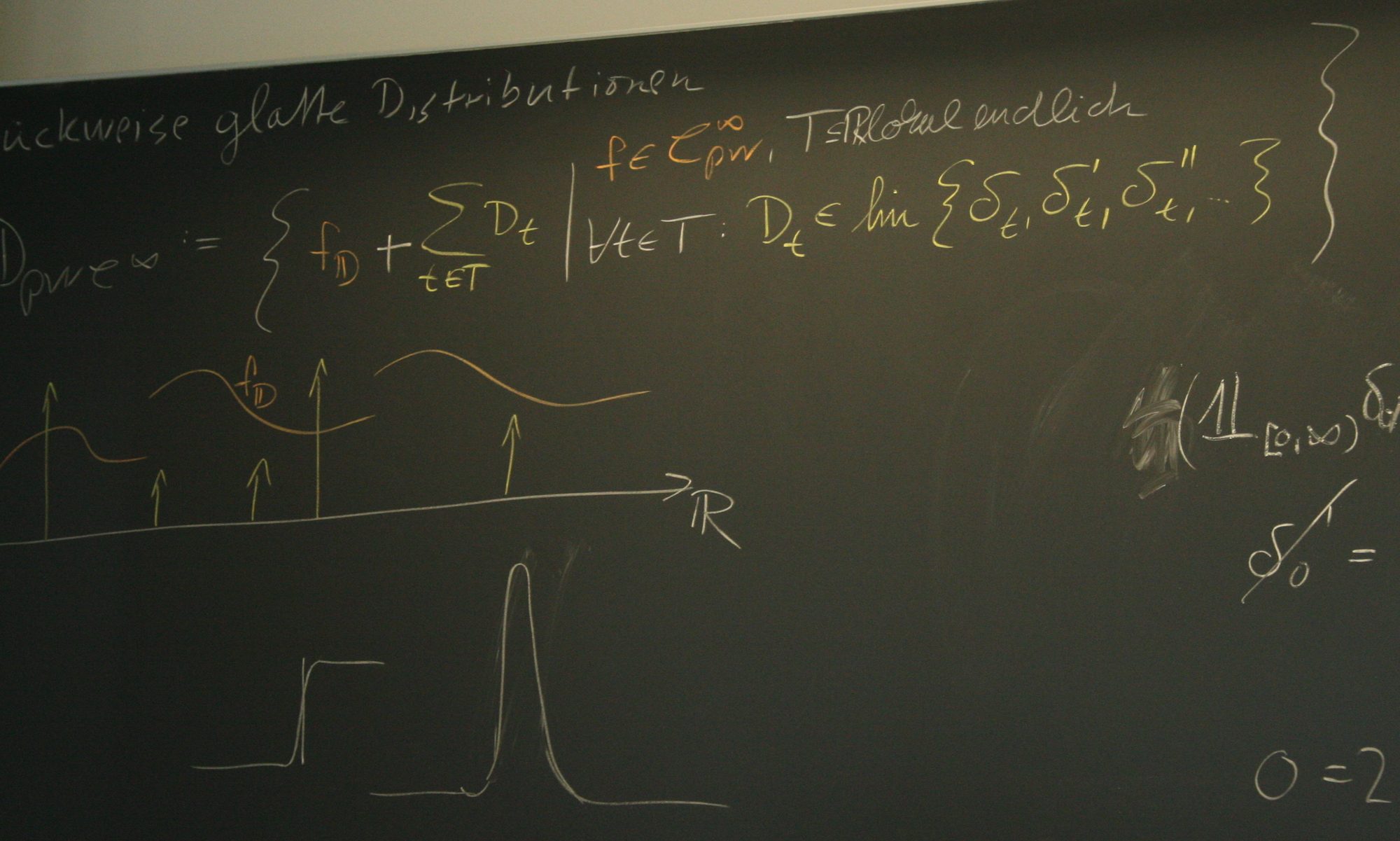Iervolino, Raffaele; Trenn, Stephan; Vasca, Francesco Stability of piecewise affine systems through discontinuous piecewise quadratic Lyapunov functions Proceedings Article In: Proc. 56th IEEE Conf. Decis. Control, pp. 5894 - 5899, Melbourne, Australia, 2017. @inproceedings{IervTren17,
title = {Stability of piecewise affine systems through discontinuous piecewise quadratic Lyapunov functions},
author = {Raffaele Iervolino and Stephan Trenn and Francesco Vasca},
url = {https://stephantrenn.net/wp-content/uploads/2017/09/Preprint-ITV170909.pdf, Preprint},
doi = {10.1109/CDC.2017.8264551},
year = {2017},
date = {2017-12-15},
urldate = {2017-12-15},
booktitle = {Proc. 56th IEEE Conf. Decis. Control},
pages = {5894 - 5899},
address = {Melbourne, Australia},
abstract = {State-dependent switched systems characterized by piecewise affine (PWA) dynamics in a polyhedral partition of the state space are considered. Sufficient conditions on the vectors fields such that the solution crosses the common boundaries of the polyhedra are expressed in terms of quadratic inequalities constrained to the polyhedra intersections. A piecewise quadratic (PWQ) function, not necessarily continuous, is proposed as a candidate Lyapunov function (LF). The sign conditions and the negative jumps at the boundaries are expressed in terms of linear matrix inequalities (LMIs) via cone-copositivity. A sufficient condition for the asymptotic stability of the PWA system is then obtained by finding a PWQ-LF through the solution of a set LMIs. Numerical results with a conewise linear system and an opinion dynamics model show the effectiveness of the proposed approach.},
keywords = {},
pubstate = {published},
tppubtype = {inproceedings}
}
State-dependent switched systems characterized by piecewise affine (PWA) dynamics in a polyhedral partition of the state space are considered. Sufficient conditions on the vectors fields such that the solution crosses the common boundaries of the polyhedra are expressed in terms of quadratic inequalities constrained to the polyhedra intersections. A piecewise quadratic (PWQ) function, not necessarily continuous, is proposed as a candidate Lyapunov function (LF). The sign conditions and the negative jumps at the boundaries are expressed in terms of linear matrix inequalities (LMIs) via cone-copositivity. A sufficient condition for the asymptotic stability of the PWA system is then obtained by finding a PWQ-LF through the solution of a set LMIs. Numerical results with a conewise linear system and an opinion dynamics model show the effectiveness of the proposed approach. |
Kausar, Rukhsana; Trenn, Stephan Impulses in structured nonlinear switched DAEs Proceedings Article In: Proc. 56th IEEE Conf. Decis. Control, pp. 3181 - 3186, Melbourne, Australia, 2017. @inproceedings{KausTren17b,
title = {Impulses in structured nonlinear switched DAEs},
author = {Rukhsana Kausar and Stephan Trenn},
url = {http://stephantrenn.net/wp-content/uploads/2017/09/Preprint-KT170920.pdf, Preprint},
doi = {10.1109/CDC.2017.8264125},
year = {2017},
date = {2017-12-14},
booktitle = {Proc. 56th IEEE Conf. Decis. Control},
pages = {3181 - 3186},
address = {Melbourne, Australia},
abstract = { Switched nonlinear differential algebraic equations (DAEs) occur in mathematical modeling of sudden transients in various physical phenomenons. Hence, it is important to investigate them with respect to the nature of their solutions. The few existing solvability results for switched nonlinear DAEs exclude Dirac impulses by definition; however, in many cases this is too restrictive. For example, in water distribution networks the water hammer effect can only be studied when allowing Dirac impulses in a nonlinear switched DAE description. We investigate existence and uniqueness of solutions with impulses for a general class of nonlinear switched DAEs, where we exploit a certain sparse structure of the nonlinearity.},
keywords = {},
pubstate = {published},
tppubtype = {inproceedings}
}
Switched nonlinear differential algebraic equations (DAEs) occur in mathematical modeling of sudden transients in various physical phenomenons. Hence, it is important to investigate them with respect to the nature of their solutions. The few existing solvability results for switched nonlinear DAEs exclude Dirac impulses by definition; however, in many cases this is too restrictive. For example, in water distribution networks the water hammer effect can only be studied when allowing Dirac impulses in a nonlinear switched DAE description. We investigate existence and uniqueness of solutions with impulses for a general class of nonlinear switched DAEs, where we exploit a certain sparse structure of the nonlinearity. |
Küsters, Ferdinand; Patil, Deepak; Trenn, Stephan Switch observability for a class of inhomogeneous switched DAEs Proceedings Article In: Proc. 56th IEEE Conf. Decis. Control, pp. 3175 - 3180, Melbourne, Australia, 2017. @inproceedings{KustPati17b,
title = {Switch observability for a class of inhomogeneous switched DAEs},
author = {Ferdinand Küsters and Deepak Patil and Stephan Trenn},
url = {http://stephantrenn.net/wp-content/uploads/2017/09/Preprint-KPT170919.pdf, Preprint},
doi = {10.1109/CDC.2017.8264124},
year = {2017},
date = {2017-12-13},
booktitle = {Proc. 56th IEEE Conf. Decis. Control},
pages = {3175 - 3180},
address = {Melbourne, Australia},
abstract = {Necessary and sufficient conditions for switching time and switch observability of a class of inhomogeneous switched differential algebraic equations (DAEs) are obtained. A characterization of initial states and inputs for which switched DAEs are switch unobservable is also provided by using the zeros of an augmented system obtained by combining the output of two modes suitably.},
keywords = {},
pubstate = {published},
tppubtype = {inproceedings}
}
Necessary and sufficient conditions for switching time and switch observability of a class of inhomogeneous switched differential algebraic equations (DAEs) are obtained. A characterization of initial states and inputs for which switched DAEs are switch unobservable is also provided by using the zeros of an augmented system obtained by combining the output of two modes suitably. |
Küsters, Ferdinand; Trenn, Stephan; Wirsen, Andreas Switch-observer for switched linear systems Proceedings Article In: Proc. 56th IEEE Conf. Decis. Control, pp. 1749 - 1754, Melbourne, Australia, 2017. @inproceedings{KustTren17b,
title = {Switch-observer for switched linear systems},
author = {Ferdinand Küsters and Stephan Trenn and Andreas Wirsen},
url = {http://stephantrenn.net/wp-content/uploads/2017/09/Preprint-KTW170901.pdf, Preprint},
doi = {10.1109/CDC.2017.8263903},
year = {2017},
date = {2017-12-12},
booktitle = {Proc. 56th IEEE Conf. Decis. Control},
pages = {1749 - 1754},
address = {Melbourne, Australia},
abstract = {To determine the switching signal and the state of a switched linear system, one usually requires mode observability. This requires that all individual modes are observable and that the modes are distinguishable. In theory, it allows to determine the active mode in an arbitrarily short time. If one enlarges the observation to an interval that contains a switch, both assumptions (observability of each mode and clearly distinct dynamics) can be relaxed. In [Küsters and Trenn 2017] this concept, called switch observability, was formalized. It is of particular interest for fault identification. Based on switch observability, we propose an observer. This observer combines the information obtained before and after a switching instant to determine both the state and the switching signal. It is analyzed and illustrated in an example.},
keywords = {},
pubstate = {published},
tppubtype = {inproceedings}
}
To determine the switching signal and the state of a switched linear system, one usually requires mode observability. This requires that all individual modes are observable and that the modes are distinguishable. In theory, it allows to determine the active mode in an arbitrarily short time. If one enlarges the observation to an interval that contains a switch, both assumptions (observability of each mode and clearly distinct dynamics) can be relaxed. In [Küsters and Trenn 2017] this concept, called switch observability, was formalized. It is of particular interest for fault identification. Based on switch observability, we propose an observer. This observer combines the information obtained before and after a switching instant to determine both the state and the switching signal. It is analyzed and illustrated in an example. |

